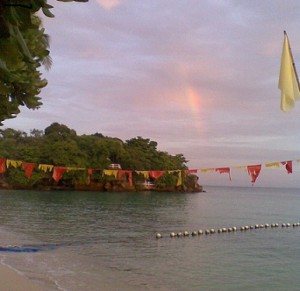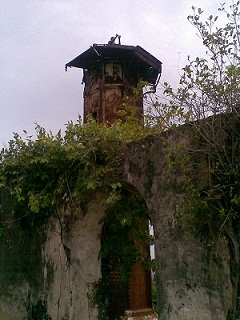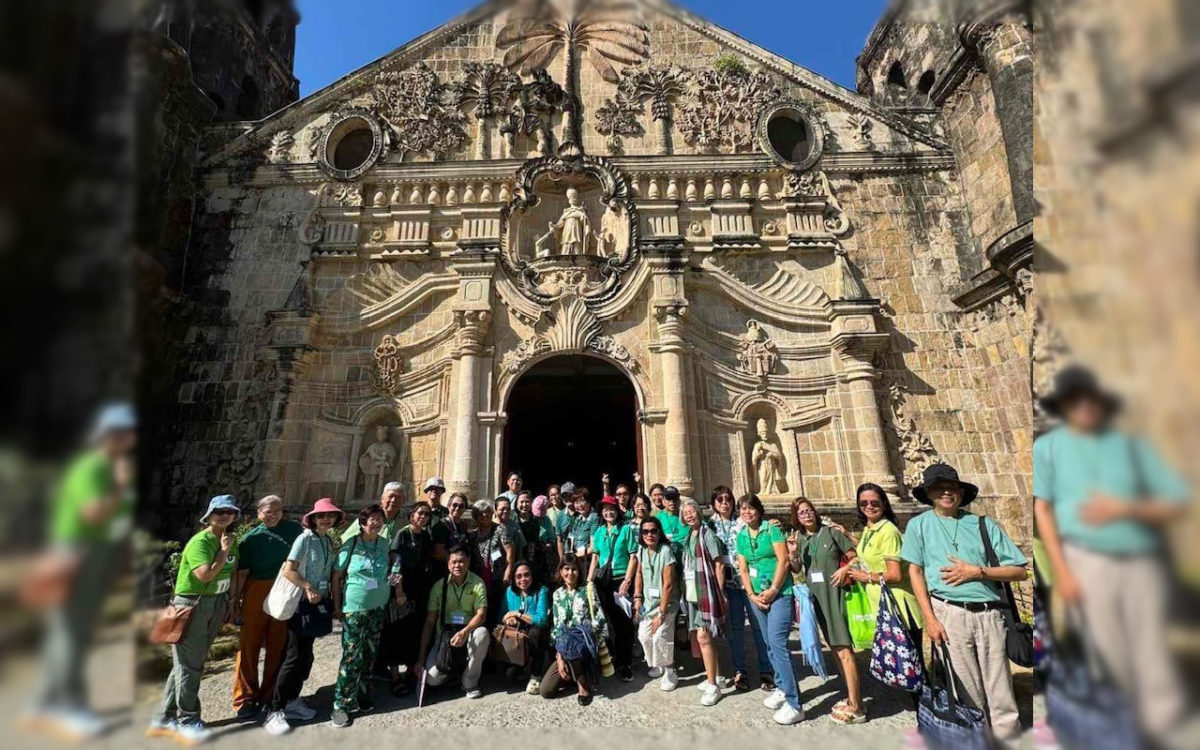By YOLANDA L. PUNSALAN
 THERE is nothing excessive about Guimaras, except of course the world renowned sweetness of its mangoes.
THERE is nothing excessive about Guimaras, except of course the world renowned sweetness of its mangoes.
Being one of the Philippines’ smallest island provinces, many things about Guimaras seem to be reduced to bonsai proportions. It has earned the reputation in the Guinness World Record of having the world’s smallest plaza—an area with an elevation of five small steps, a mini monument of Jose Rizal in his boyhood, and a mini stage.
To all first-time tourists to Guimaras, this is the most likely first stop, since it is closest
to Jordan Wharf, where pumpboat passengers from Iloilo disembark. Beside the world’s smallest plaza, are small houses, but ironically with architectural designs befitting mansions.
They built a generic monument for their local heroes—their farmers and fisherfolk, a single statue almost just the size of a big doll atop an obelisk, situated near the Museo ng Guimaras.
To a traveler whose daily city diet consists of the nerve-shattering noise of the railroad tracks and the million vehicles honking the highways, the silent, blissful gem of Guimaras island reveals itself in the wee small hours of dawn.
Darkness enveloping the island can be scary as one is used to bright metropolitan street lights, but the friendly calls of nature’s creatures—every insect, every toad, gecko (Tuko), maya and all species of birds only expert bird watchers can identify, burst into an incessant, consistent orchestra of sounds, each animal crescendoing in the darkness, seeming to speak up its name in an attendance roll call, “I am here, ready to seize the day.”
 The beautiful sounds do not echo; they are each distinct from one another, and naturally amplified without any need of electronic help. They emanate from every leaf, every nook of the theater of the forest in wild wonderful symphony. It is an incredible experience to be audience to this enchantment.
The beautiful sounds do not echo; they are each distinct from one another, and naturally amplified without any need of electronic help. They emanate from every leaf, every nook of the theater of the forest in wild wonderful symphony. It is an incredible experience to be audience to this enchantment.
The low-tide beach at dawn is home to playful boys getting energy from the water as the boatman readies his watercraft to bring guests island hopping. Old men and women sit close to the shore simply watching the horizon and enjoying the breeze.
Guimaras temporarily lost its beauty right afer the Petron-contracted 998 ton tanker of the Sunshine Maritime Development Corporation named Solar I sank two million liters or 13,000 barrels of industrial oil on August 11, 2006 and damaged Tablong Island, one of Guimaras’ outlying islands, and its National Marine Reserve.
But the spirit of the Guimaraoans pulled through this tragedy, though environmental scientists said that the effect of the oil spill of this magnitude would still be felt by the succeeding two generations.
Paranoid Metro Manilans, who have become instinctively security-conscious with their personal belongings, will welcome the whiff of refreshing change in this province.
Here, one can leave their stuff in wide-open vehicles without worry. Nobody will steal them anyway.
The good fortune of Guimaras lies in its location—between Iloilo and Negros, hence it is not on the typhoon path. Their mangoes, the sweetest in the world, are said to be the only variety served in the White House and Buckingham Palace.
Being mango country, all products and events are conceptualized and concocted with the mango in mind.
The mango pizza at Pitstop Restaurant should be on everyone’s bucket list. The taste is deliciously unique and is worth the almost one-hour wait.
 This restaurant also serves mango-inspired Pasta Romeo. The Trappist monks, whose lives are dedicated to these verbs—eat, pray, love humanity and work with their hands and bodies, and also run a school, have expansive mango plantations. They bake their own mango cookies and make mango preserves and jams.
This restaurant also serves mango-inspired Pasta Romeo. The Trappist monks, whose lives are dedicated to these verbs—eat, pray, love humanity and work with their hands and bodies, and also run a school, have expansive mango plantations. They bake their own mango cookies and make mango preserves and jams.
Guimaras is in the same league as Camsur and Subic as they are now the centers of triathlons. In Guimaras though, they call the winner of such events as the Mango Man.
The island hosts extreme wild mountain bike races, on undulating slopes, narrow trails and terrain that go downhill with curves so steep, bikers would have to fly high and do their daredevil mid-air stunts before landing flat again.
In Guimaras, one can be up close to an 18th century decommissioned rusty steel lighthouse and ascend its spiral staircase. Its new replacement is a shiny white solar lighthouse, the beacon to ships that ply the Iloilo Strait in the dead of the night.
To get to savor the simple island life, taste the freshness of their soups and kanlay fish and cashews, and just surrender oneself to rusticity and the island heat.
Guimaras can be reached via pumpboat that loads up to 52 passengers, at P14 each from Parola, Iloilo. From the Negros side, the passengers alight at San Lorenzo Port, paying P50 for the boat ride.
